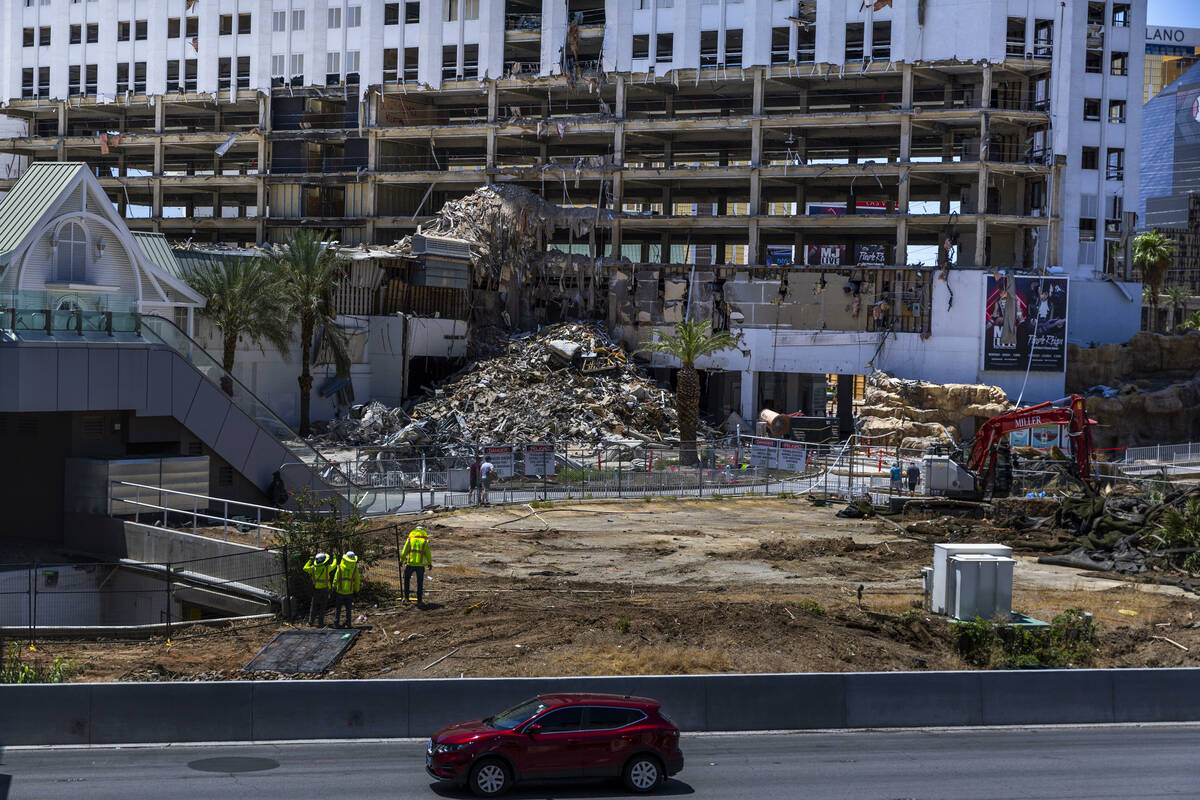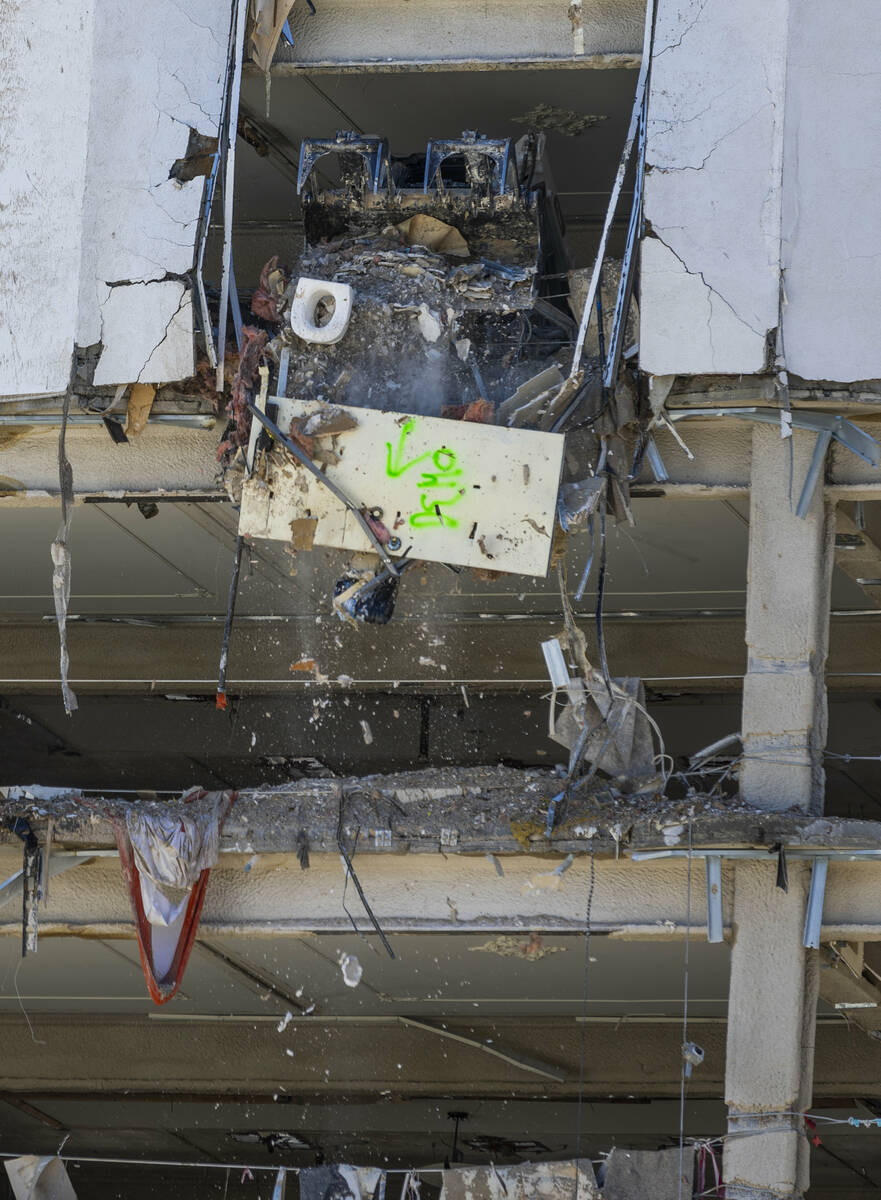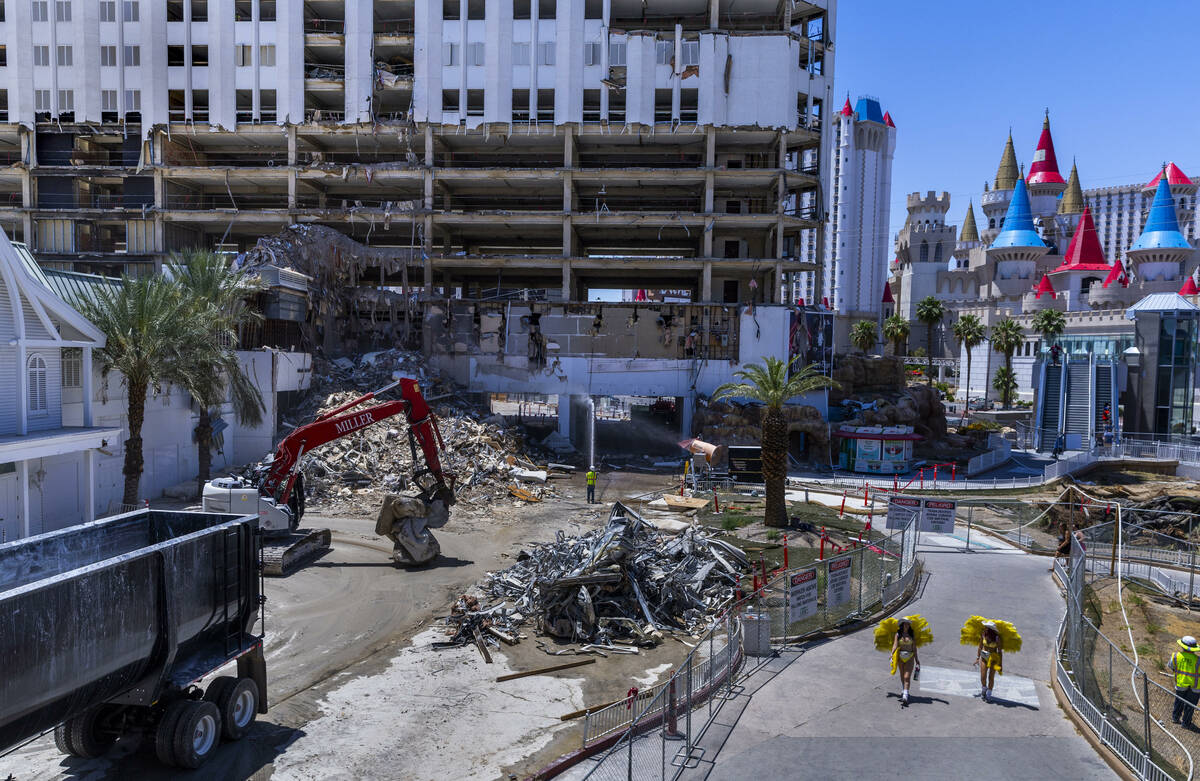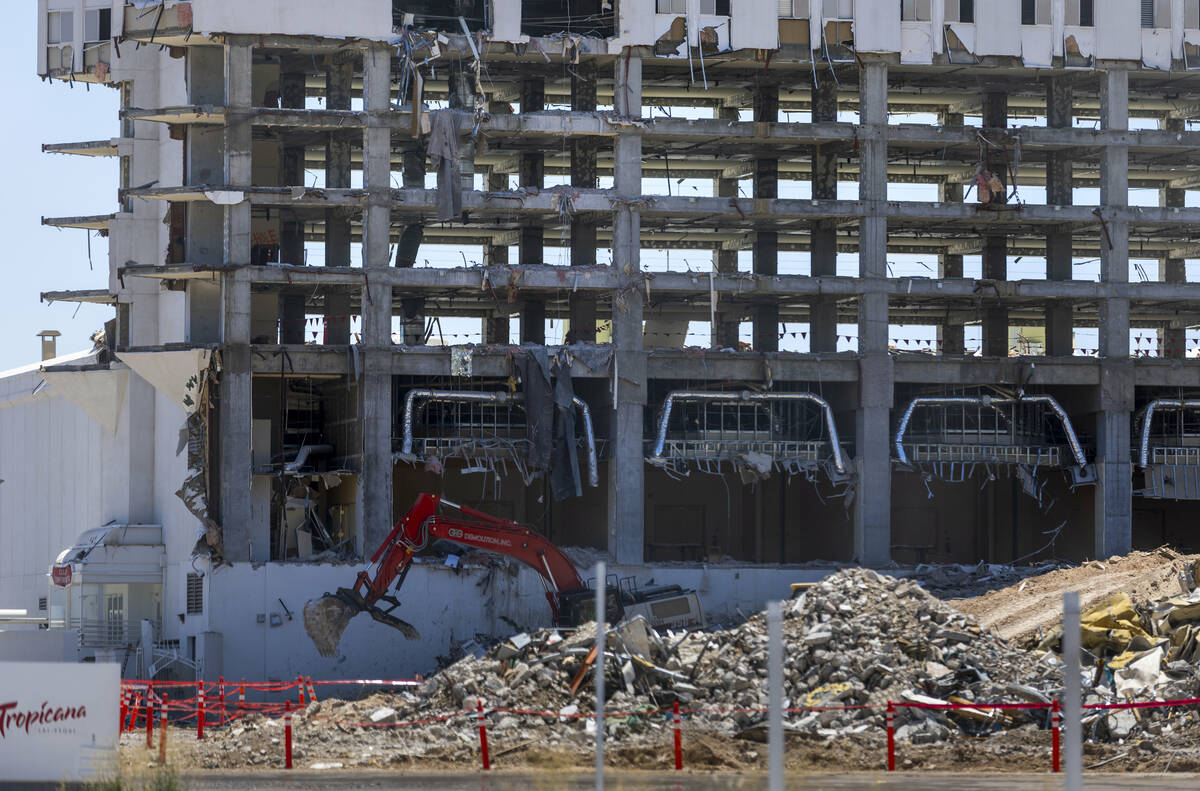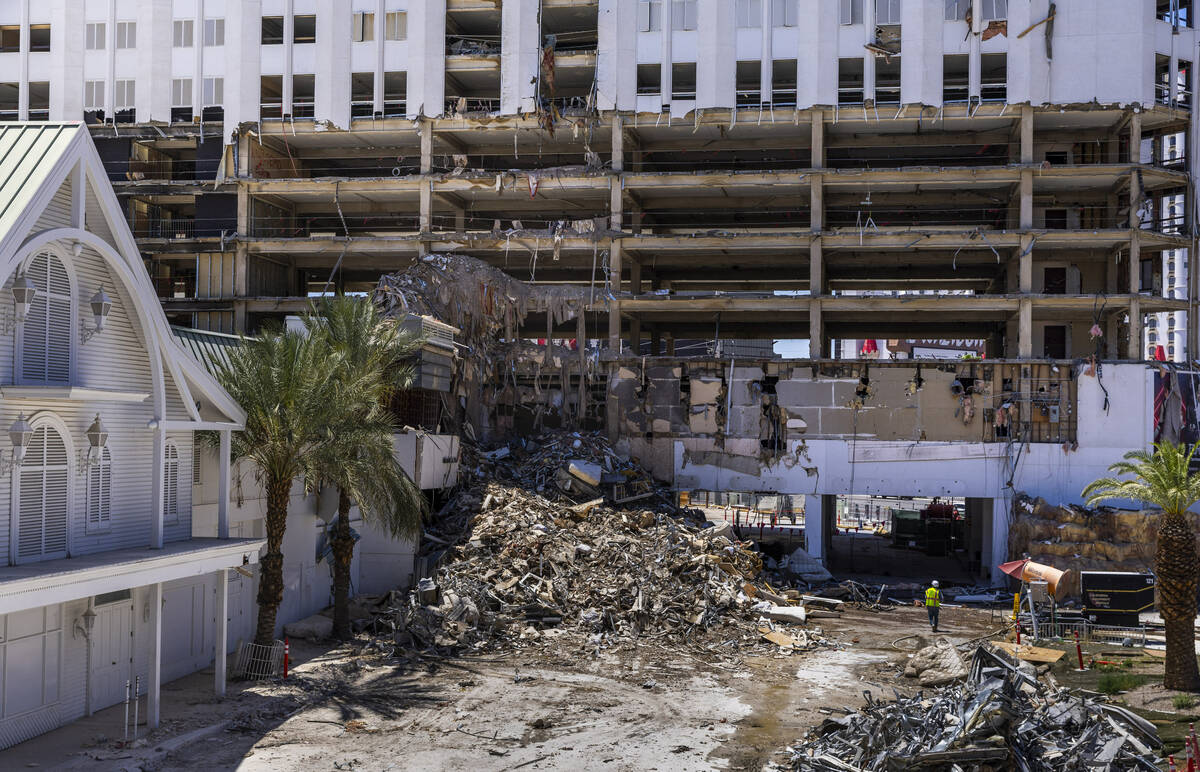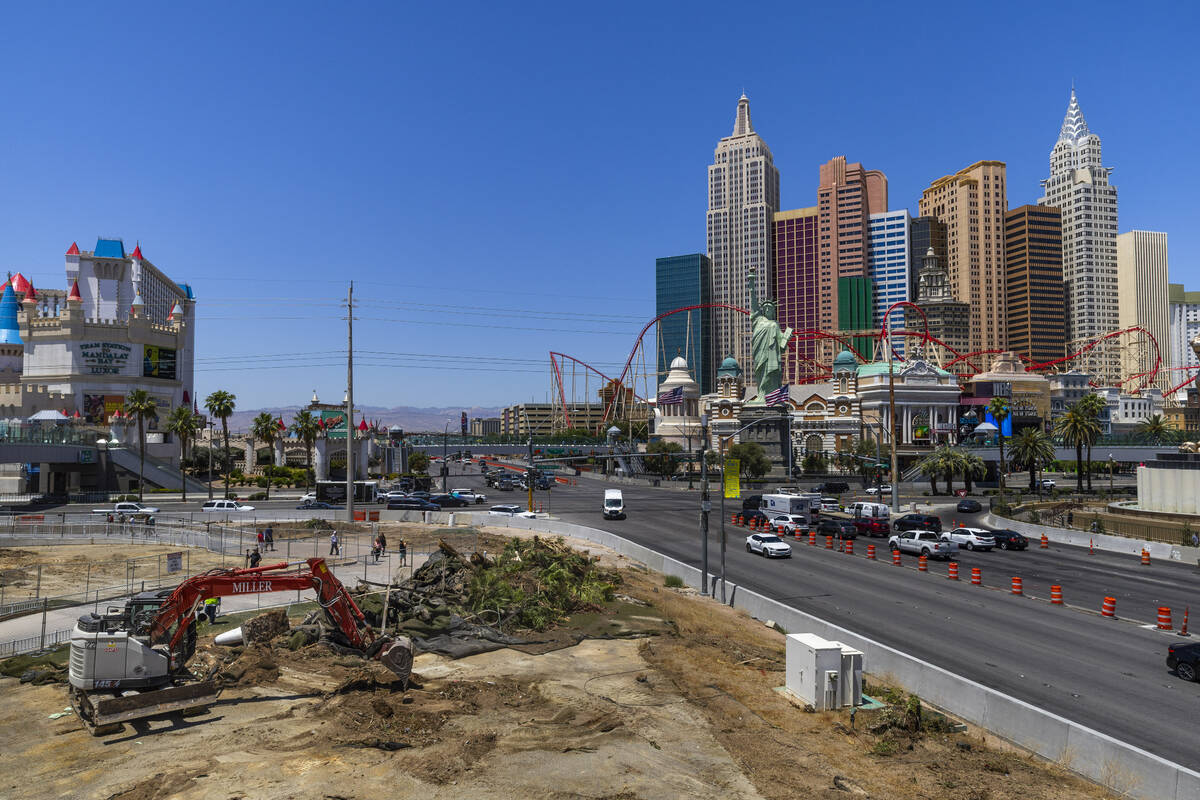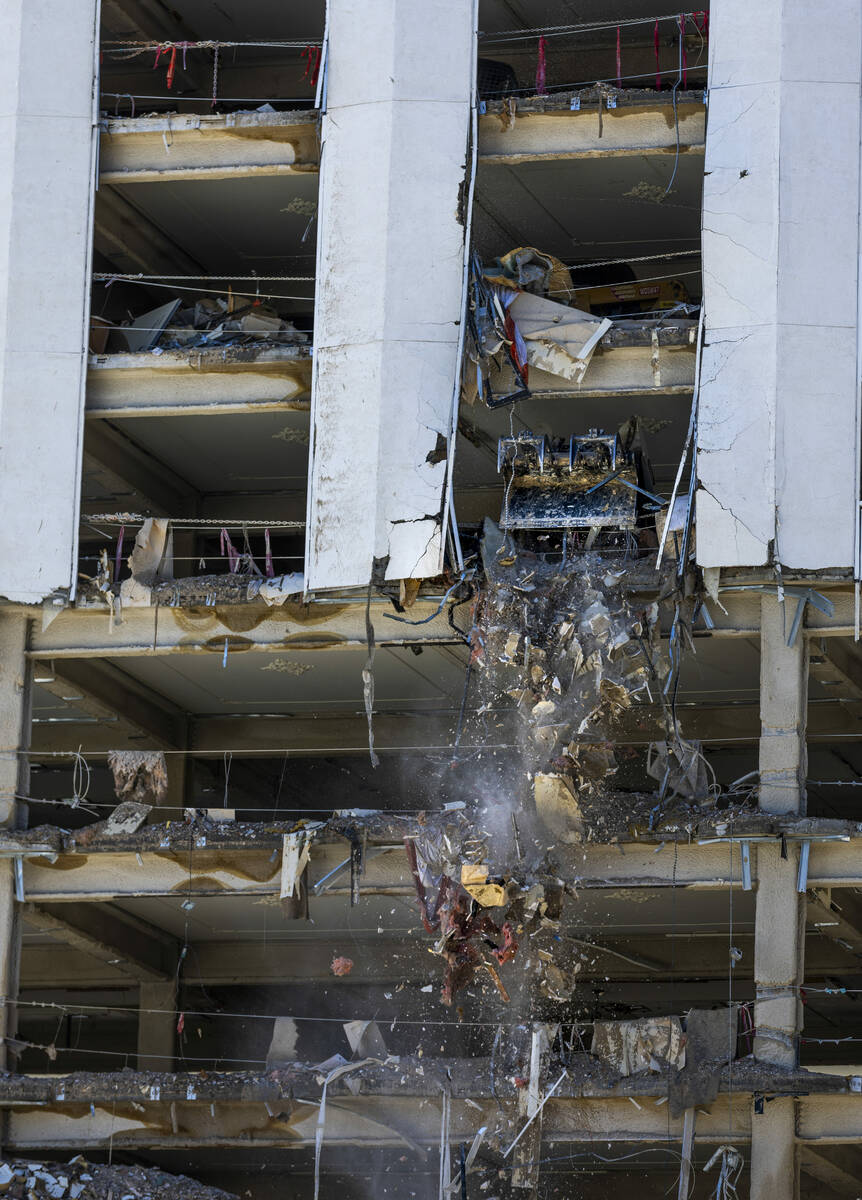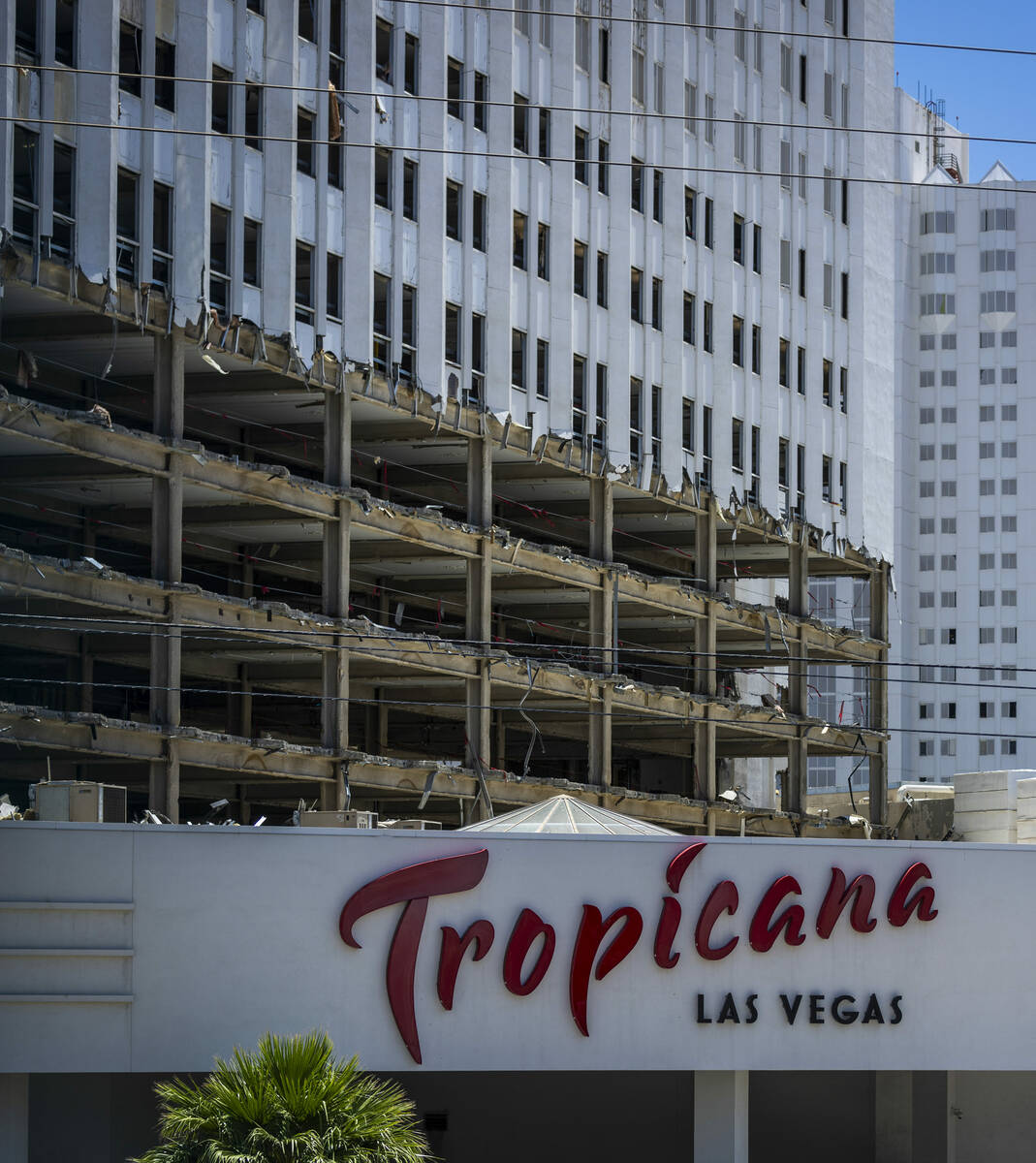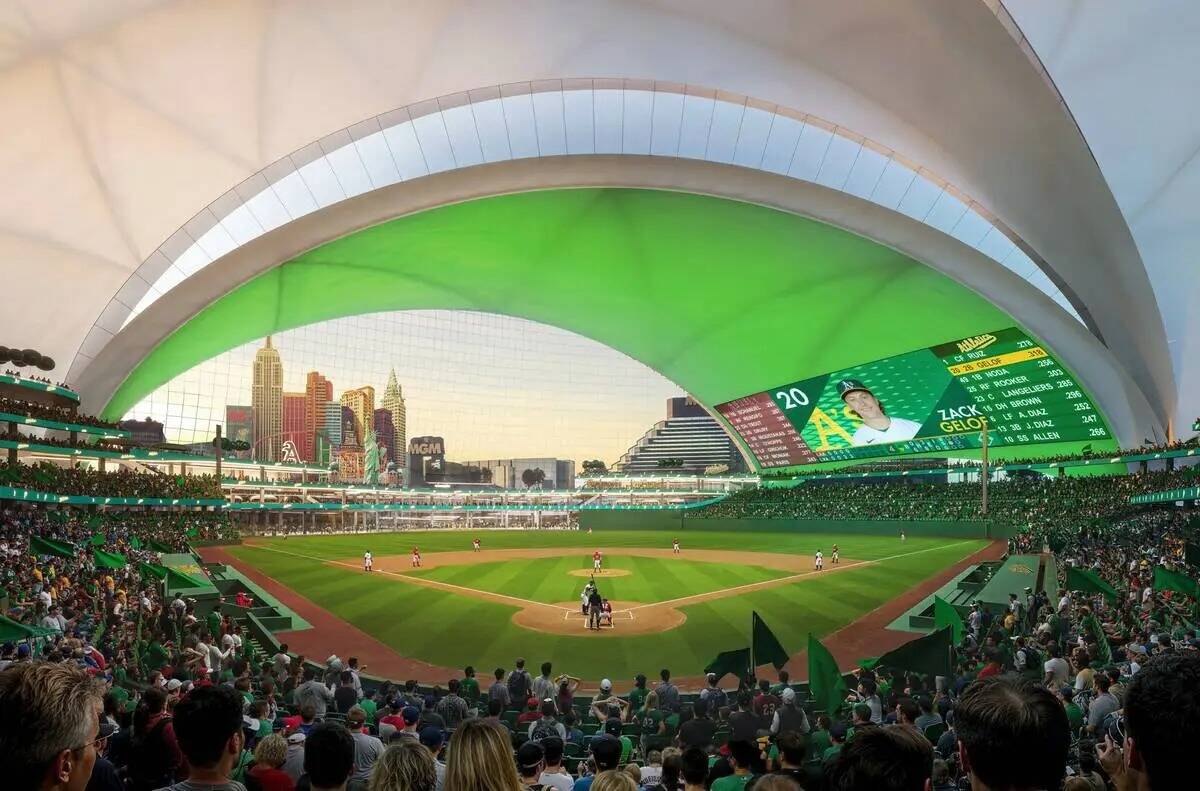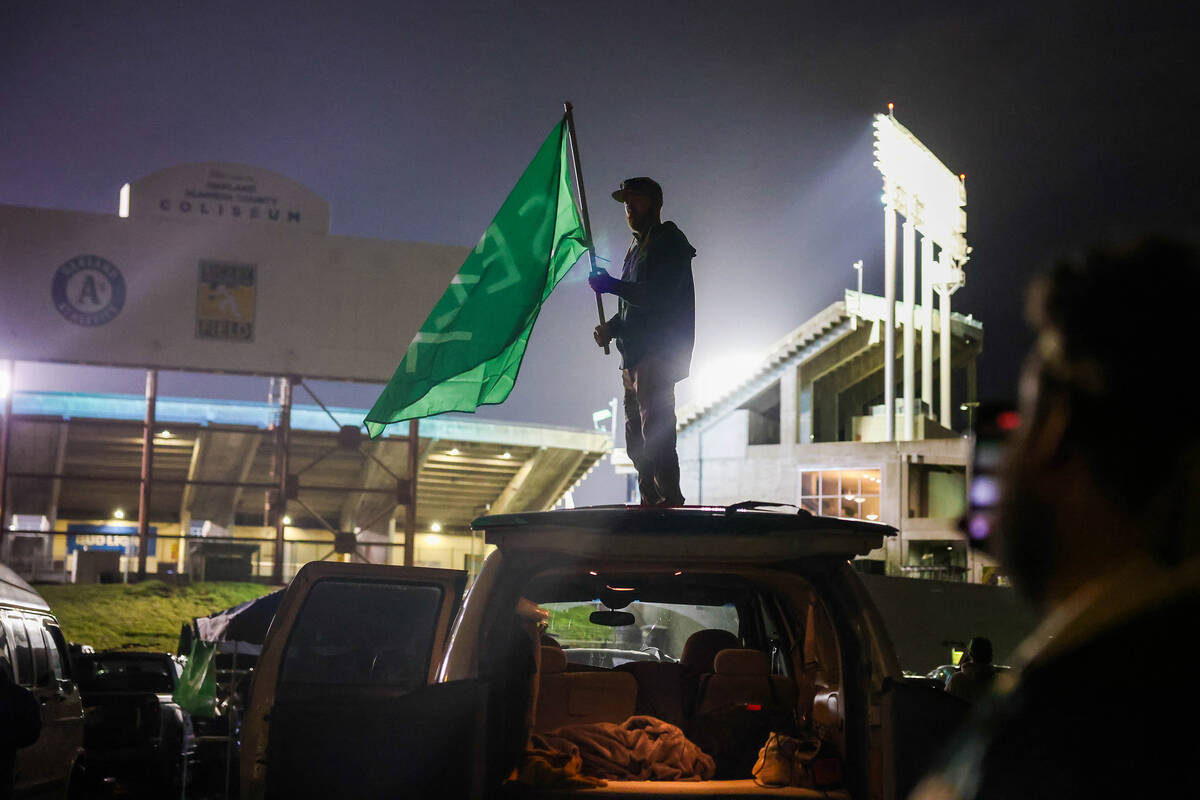1 year later: A’s ballpark plan moving forward, but big questions remain
Progress continues to be made on the Oakland Athletics’ plan to build a $1.5 billion ballpark in Las Vegas since Senate Bill 1 was signed into law a year ago, but steps remain before shovels hit the ground on the Strip.
Not the least of which being exactly where it will be built — and how it will be paid for.
SB1 was signed into law June 15, 2023, by Gov. Joe Lombardo after a special session of the Nevada Legislature, earmarks up to $380 million in public funding for the A’s ballpark.
Since then, Major League Baseball owners unanimously approved the team’s relocation to Las Vegas and the A’s have hired various groups to lead different aspects of the project including construction manager in Mortenson-McCarthy, lead designer Bjarke Ingels Group, architect of record HNTB and suite and ticket sales lead Legends
The A’s also released new renderings of their planned ballpark, chose Sacramento as their temporary home after they vacate the Oakland Coliseum when their lease concludes following this season and before they begin playing in Southern Nevada in 2028.
“Things are moving forward,” A’s President Dave Kaval told the Review-Journal. “We’re crossing off a lot of the tasks necessary to get this done. We just keep working, day-in-and-day-out, working toward that 2025 groundbreaking and the 2028 opening. We’re very excited about all the progress that has been made in a year.”
Tropicana owner Bally’s Corp. closed the Rat Pack-era resort in April and have since begun demolishing the property. Plans call for the building to be completely brought down by the end of the year.
“Everything is on track, and it’s supposed to come down by October,” Soo Kim, Bally’s Corp. chairman said in an email to the Las Vegas Review-Journal.
Crews are tearing down various portions of the building, with an implosion still possible as October approaches. Contractor GGG Demolition Inc., will need to obtain a separate demolition and blast permit for an implosion to occur, according to Clark County.
Plans call for the site to be cleared in time for the A’s to begin construction on the stadium in April.
After leading the process that led to the on-time construction of Allegiant Stadium, Las Vegas Stadium Authority Chairman Steve Hill said he also believes the process is moving ahead at an adequate pace.
“The time frames that we anticipated when that bill was written and then passed in the Legislature are the timeframes that we’re on,” said Hill, who also serves as president and CEO of the Las Vegas Convention and Visitors Authority. “Things are proceeding as we anticipated them to and things seem to be working well.”
Lobbyists for the A’s also beat back an attempt to bring the ballpark public funding to a vote in November by Nevada State Education Association backed political action committee Schools Over Stadiums. A separate legal challenge by Strong Public Schools, which is also backed by the NSEA, is ongoing. The lawsuit revolves around certain portions of SB1 that the groups said were in violation of the state constitution.
What’s left to do?
The A’s are continuing design work, with the ballpark’s schematic design nearing completion and the design-development phases ready to begin thereafter, Kaval said.
With the community benefits agreement already approved by the stadium authority, there are three outstanding agreements that need to be approved by the board: the lease, nonrelocation and development agreements.
The A’s and the stadium authority are negotiating the terms of the lease and nonrelocation agreements, which includes how many away “home” games the team can play outside of the market each season. Those could be up for approval as soon as the July 18 stadium authority meeting.
The all-important draft development agreement could be presented at the July meeting. It will be the largest of the four major agreements and include ballpark construction and financing details.
“The next meeting is in July, we’re going to keep working toward those (agreements),” Kaval said.
After those agreements are finalized and the demolition of the Tropicana wraps up, the A’s will then have to obtain grading and foundation permits from Clark County and show proof of funding ahead of work starting on the ballpark. From there, the A’s will need to get the bonding process going with Clark County, for its $120 million share of the financing.
The A’s must prove they have the money in place bef0re receiving any public funding for the project. Hill has noted that he expects the A’s to ask the county to begin the bonding process sometime early next year.
Clark County Commissioner Michael Naft said that, for all he knows, that the process is on track, even through the board of commissioners have yet to vote on anything related to the A’s planned stadium. If the county is presented with the A’s plans at the start of 2025 Naft believes that should be adequate time to process them and move toward the April groundbreaking.
“The country is not going to be put in a position to rush anything,” Naft said. “The county has to do its due diligence. It’s a complicated project, and there are things that the county and locals will demand and need from this project. But I think that timeline makes sense, as long as it doesn’t put Clark County in the back seat. There are a whole variety of land use related issues that will need to be examined and evaluated from the country’s perspective and there needs to be an opportunity to do that.”
After that, the A’s must also spend the first $100 million on the project before they can receive any public funding toward construction on the project, just as was the case in the Raiders and the building of Allegiant Stadium.
Funding still needs to be identified
The A’s are responsible for about $1.1 billion on the project after public financing is factored in. The A’s are entertaining potential offers to bring in investors to help fund a portion of the cost. If that doesn’t pan out, A’s owner John Fisher and his family are ready to foot the entire bill themselves, according to the team.
“John Fisher has publicly expressed his interest in bringing in partners to foster community connections in Las Vegas and Nevada,” the team said in a statement. “He has also indicated that he and his family are prepared to finance all required equity for the new ballpark, enabling the project to proceed with or without new partners. Exploring options and bringing on investors are common practices in the construction of sports stadiums. The Golden State Warriors and San Francisco Giants are two great examples of this.”
Whether or not there are doubts as to if the Fisher family could fund the over $1 billion themselves, Hill said he has no reason to believe they do not with the time, money and effort already put into the process.
“Regardless of what anybody thinks, they have to do that by April of next year,” Hill said. “We’ll not only have an opinion on that, but that will become a fact at that point. That that money is there and that money is available and is the money it will take to get the stadium built.”
Contact Mick Akers at makers@reviewjournal.com or 702-387-2920. Follow @mickakers on X.




